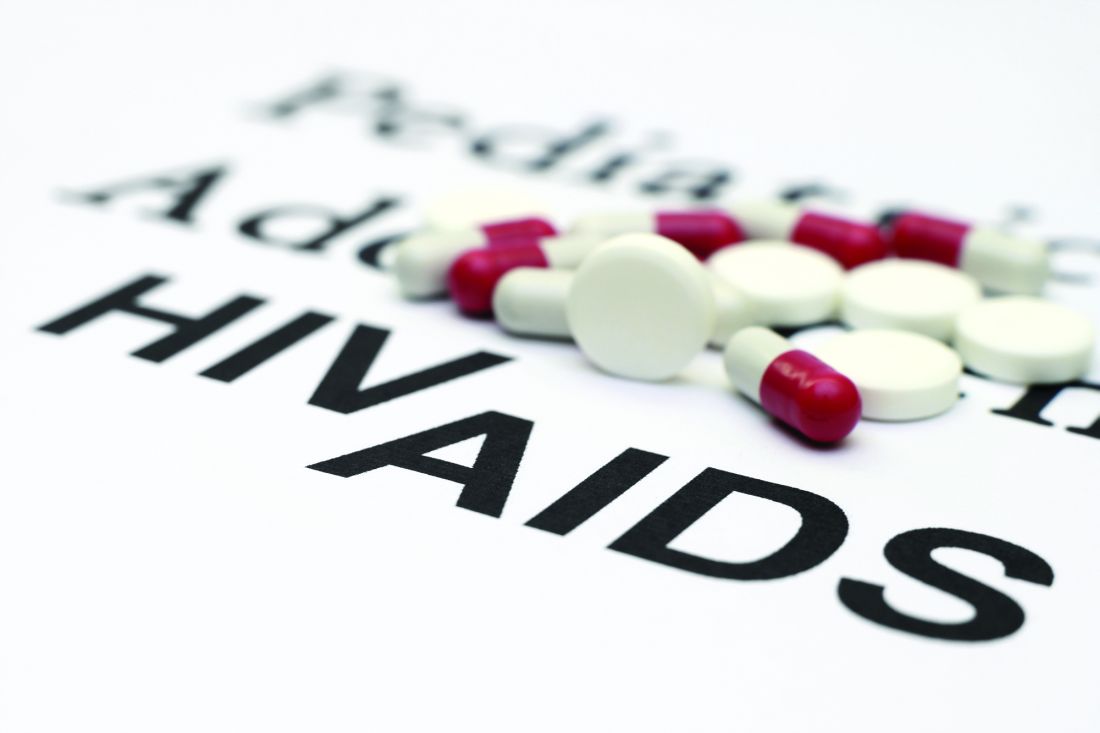User login
A great volume of HIV and AIDS research enters the medical literature every month. It’s difficult to monitor everything, so here’s a quick look at some notable news items and journal articles published over the past few weeks.
The prevalence of multidrug-resistant gram-negative organisms is significantly higher in HIV-positive males than in HIV-negative males, according to a study in BMC Infectious Diseases.
“[The] effects of HIV-1 on epitope evolution in M. tuberculosis may have implications for the design of [Mycobacterium] tuberculosis vaccines that are intended for use in populations with high HIV-1 infection rates,” says a report published in Molecular Biology and Evolution.
A study in AIDS Care found that depression partially mediated the relationship between basic psychological needs and quality of life in people living with HIV, suggesting that basic psychological needs and depression may be specific targets for psychosocial interventions.
HIV-infected participants who took 52 weeks of pitavastatin 4 mg daily (vs. pravastatin 40 mg daily) experienced a greater reduction in select markers of immune activation and arterial inflammation, in a 45-site study.
Plasma soluble CD163 was independently associated with incident chronic kidney disease, chronic lung disease, and liver disease in treated HIV-1 infected individuals, according to a study in the journal AIDS.
The recombinant multiepitope protein MEP1 has the potential to be developed as an effective HIV-1 vaccine candidate, a recent study found, although suitable adjuvant is necessary for this protein to generate protective immune responses.
A study in HIV Clinical Trials found that the drug combination emtricitabine/tenofovir alafenamide offers safety advantages to HIV patients over the combination emtricitabine/tenofovir disoproxil fumarate and can be an important option as a nucleoside reverse transcriptase inhibitor backbone given with a variety of third agents.
A dataset analysis found mortality and CD4 progression rates in HIV-1 infected people exhibited regional and age-specific differences, with decreased survival in African and Southeast Asian/East Asian cohorts compared with European/North American and older age groups.
Residence in supportive housing is associated with improvements in CD4 count and viral load for a sample of formerly homeless persons living with HIV/AIDS, according to an Ohio-based study of 86 participants in a supportive housing program.
People living with HIV have a higher incidence of non–AIDS-defining cancer than does the general population and HCV-coinfection is associated with a higher incidence of non–AIDS-defining cancer.
Higher body mass index, lower apolipoprotein A1 and albumin were identified as factors associated with HDL dysfunction in chronic HIV-1 infection, according to a retrospective study in JAIDS.
A study in the journal AIDS found that alcohol use trajectories characterized by persistent unhealthy drinking are associated with more advanced HIV disease severity among HIV-infected veterans in the United States.
rpizzi@frontlinemedcom.com
On Twitter @richpizzi
A great volume of HIV and AIDS research enters the medical literature every month. It’s difficult to monitor everything, so here’s a quick look at some notable news items and journal articles published over the past few weeks.
The prevalence of multidrug-resistant gram-negative organisms is significantly higher in HIV-positive males than in HIV-negative males, according to a study in BMC Infectious Diseases.
“[The] effects of HIV-1 on epitope evolution in M. tuberculosis may have implications for the design of [Mycobacterium] tuberculosis vaccines that are intended for use in populations with high HIV-1 infection rates,” says a report published in Molecular Biology and Evolution.
A study in AIDS Care found that depression partially mediated the relationship between basic psychological needs and quality of life in people living with HIV, suggesting that basic psychological needs and depression may be specific targets for psychosocial interventions.
HIV-infected participants who took 52 weeks of pitavastatin 4 mg daily (vs. pravastatin 40 mg daily) experienced a greater reduction in select markers of immune activation and arterial inflammation, in a 45-site study.
Plasma soluble CD163 was independently associated with incident chronic kidney disease, chronic lung disease, and liver disease in treated HIV-1 infected individuals, according to a study in the journal AIDS.
The recombinant multiepitope protein MEP1 has the potential to be developed as an effective HIV-1 vaccine candidate, a recent study found, although suitable adjuvant is necessary for this protein to generate protective immune responses.
A study in HIV Clinical Trials found that the drug combination emtricitabine/tenofovir alafenamide offers safety advantages to HIV patients over the combination emtricitabine/tenofovir disoproxil fumarate and can be an important option as a nucleoside reverse transcriptase inhibitor backbone given with a variety of third agents.
A dataset analysis found mortality and CD4 progression rates in HIV-1 infected people exhibited regional and age-specific differences, with decreased survival in African and Southeast Asian/East Asian cohorts compared with European/North American and older age groups.
Residence in supportive housing is associated with improvements in CD4 count and viral load for a sample of formerly homeless persons living with HIV/AIDS, according to an Ohio-based study of 86 participants in a supportive housing program.
People living with HIV have a higher incidence of non–AIDS-defining cancer than does the general population and HCV-coinfection is associated with a higher incidence of non–AIDS-defining cancer.
Higher body mass index, lower apolipoprotein A1 and albumin were identified as factors associated with HDL dysfunction in chronic HIV-1 infection, according to a retrospective study in JAIDS.
A study in the journal AIDS found that alcohol use trajectories characterized by persistent unhealthy drinking are associated with more advanced HIV disease severity among HIV-infected veterans in the United States.
rpizzi@frontlinemedcom.com
On Twitter @richpizzi
A great volume of HIV and AIDS research enters the medical literature every month. It’s difficult to monitor everything, so here’s a quick look at some notable news items and journal articles published over the past few weeks.
The prevalence of multidrug-resistant gram-negative organisms is significantly higher in HIV-positive males than in HIV-negative males, according to a study in BMC Infectious Diseases.
“[The] effects of HIV-1 on epitope evolution in M. tuberculosis may have implications for the design of [Mycobacterium] tuberculosis vaccines that are intended for use in populations with high HIV-1 infection rates,” says a report published in Molecular Biology and Evolution.
A study in AIDS Care found that depression partially mediated the relationship between basic psychological needs and quality of life in people living with HIV, suggesting that basic psychological needs and depression may be specific targets for psychosocial interventions.
HIV-infected participants who took 52 weeks of pitavastatin 4 mg daily (vs. pravastatin 40 mg daily) experienced a greater reduction in select markers of immune activation and arterial inflammation, in a 45-site study.
Plasma soluble CD163 was independently associated with incident chronic kidney disease, chronic lung disease, and liver disease in treated HIV-1 infected individuals, according to a study in the journal AIDS.
The recombinant multiepitope protein MEP1 has the potential to be developed as an effective HIV-1 vaccine candidate, a recent study found, although suitable adjuvant is necessary for this protein to generate protective immune responses.
A study in HIV Clinical Trials found that the drug combination emtricitabine/tenofovir alafenamide offers safety advantages to HIV patients over the combination emtricitabine/tenofovir disoproxil fumarate and can be an important option as a nucleoside reverse transcriptase inhibitor backbone given with a variety of third agents.
A dataset analysis found mortality and CD4 progression rates in HIV-1 infected people exhibited regional and age-specific differences, with decreased survival in African and Southeast Asian/East Asian cohorts compared with European/North American and older age groups.
Residence in supportive housing is associated with improvements in CD4 count and viral load for a sample of formerly homeless persons living with HIV/AIDS, according to an Ohio-based study of 86 participants in a supportive housing program.
People living with HIV have a higher incidence of non–AIDS-defining cancer than does the general population and HCV-coinfection is associated with a higher incidence of non–AIDS-defining cancer.
Higher body mass index, lower apolipoprotein A1 and albumin were identified as factors associated with HDL dysfunction in chronic HIV-1 infection, according to a retrospective study in JAIDS.
A study in the journal AIDS found that alcohol use trajectories characterized by persistent unhealthy drinking are associated with more advanced HIV disease severity among HIV-infected veterans in the United States.
rpizzi@frontlinemedcom.com
On Twitter @richpizzi

